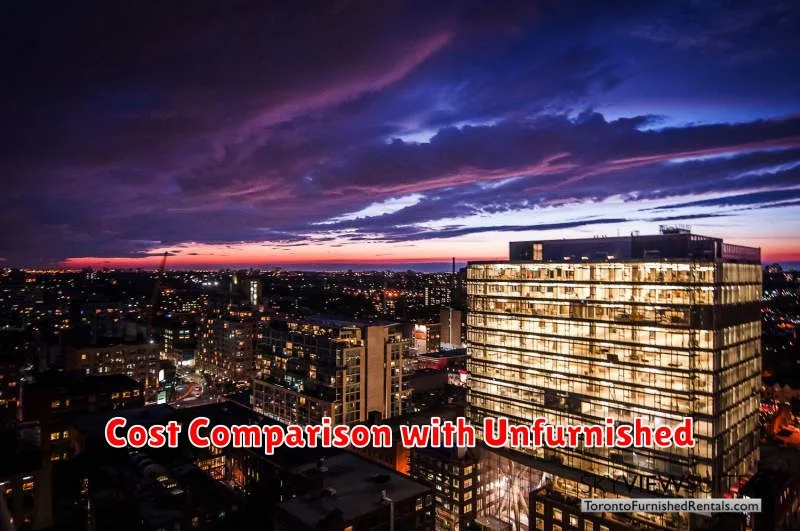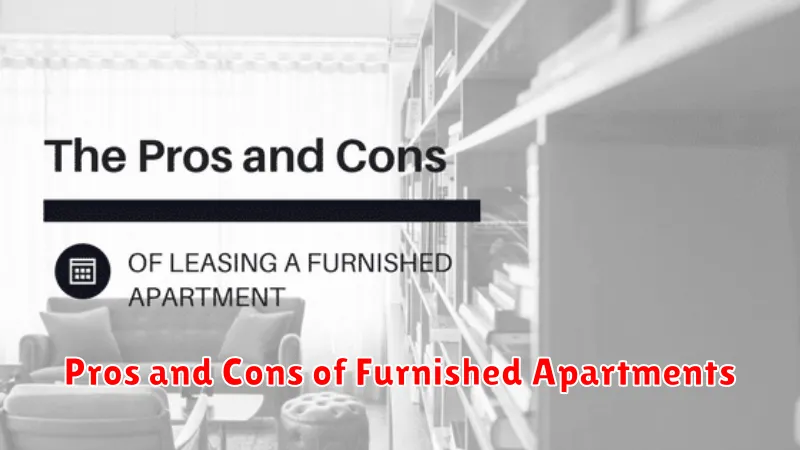Are you considering a furnished apartment? Weighing the pros and cons of furnished apartments is crucial to making an informed decision. Understanding the advantages and disadvantages of furnished rentals will help you determine if this housing option aligns with your lifestyle and needs. This article will explore the various pros and cons to consider when choosing a furnished apartment versus an unfurnished one, enabling you to make the best possible choice for your next move.
From the convenience of move-in ready spaces to potential budget implications, exploring the pros and cons of furnished apartments is essential. Whether you are a student, a professional relocating for work, or simply seeking a hassle-free living experience, understanding the benefits and drawbacks of a furnished apartment is key. This comprehensive guide will delve into the key pros and cons, helping you navigate the decision-making process and determine if a furnished rental is the right fit for you.
What Is a Furnished Apartment?
A furnished apartment is a rental unit that comes equipped with essential furniture. This typically includes items like a bed, sofa, dining table and chairs, and basic appliances such as a refrigerator, stove, and oven. The specific furnishings can vary depending on the landlord or property management company.
Furnished apartments cater to individuals seeking short-term accommodations or those who prefer the convenience of not having to purchase and move their own furniture. They offer a ready-to-live-in solution, eliminating the hassle and expense associated with furnishing an empty apartment.
Advantages of Furnished Rentals
Furnished rentals offer a variety of advantages, making them a compelling option for certain individuals. A primary benefit is convenience. Moving is simplified, as the hassle of transporting furniture is eliminated. This is particularly appealing for those relocating frequently or undertaking short-term stays.
Cost-effectiveness can be another advantage. Upfront costs are generally lower, as purchasing furniture is not required. This can be beneficial for individuals on a budget or those unsure of their long-term plans.
Furnished apartments also provide a sense of immediate livability. Residents can move in and settle down quickly, without the delay of furnishing the space. This is ideal for those seeking a hassle-free transition.
Drawbacks to Consider
While furnished apartments offer convenience, they also come with potential downsides. One significant drawback is the limited personalization. Your decorative style might clash with the existing furniture and decor, restricting your ability to create a space that truly feels like your own.
Higher rental costs are also common. Landlords often charge a premium for furnished units to cover the cost of furnishing and potential damage. Additionally, inventory can be limited, making it harder to find a furnished apartment that meets your specific needs and location preferences.
Finally, there’s the risk of damage charges. You are responsible for the condition of the provided furniture, and you could be held liable for any damages, even accidental ones. This can add an extra layer of stress to your living experience.
Cost Comparison with Unfurnished

A key factor in deciding between furnished and unfurnished apartments is cost. Furnished apartments generally command higher monthly rents. This premium covers the use of furniture, appliances, and sometimes utilities like internet and cable.
Unfurnished apartments, while having lower upfront rent costs, require a significant initial investment to become habitable. You’ll need to purchase or rent essential furniture, appliances, and décor. This can represent a substantial outlay, especially for first-time renters.
Long-term stays can make unfurnished apartments more cost-effective, as the initial investment is spread over a longer period. Short-term stays often favor furnished apartments, eliminating large upfront expenses and the hassle of moving furniture.
Who Should Choose Furnished Apartments?
Furnished apartments cater to a specific range of individuals and lifestyles. They are an excellent choice for those seeking convenience and short-term housing solutions.
Students or young professionals relocating for internships or temporary job assignments benefit greatly from furnished apartments, avoiding the hassle and expense of moving furniture. Corporate travelers on short-term projects or individuals in the midst of a transition, such as relocating for a new job or a temporary stay, will also find furnished apartments a practical option.
Those who prefer a minimalist lifestyle and are not interested in acquiring furniture may also find furnished apartments appealing.
Lease Terms and Conditions
Lease terms for furnished apartments can differ significantly from unfurnished units. Lease duration is a key factor. Short-term leases, often 3-6 months, cater to temporary stays. Standard leases are typically 12 months. Flexibility is less common with furnished rentals.
Utilities are often included in the rent, covering electricity, water, and sometimes internet and cable. Clarify these inclusions in the lease agreement. The condition of the furnishings should be documented upon move-in and move-out to avoid disputes regarding damages. Be sure the lease specifies the inventory of included furniture.
Maintenance of Provided Furniture

A key consideration with furnished apartments is the upkeep of the provided furniture. Tenants are generally expected to maintain the furniture in reasonable condition, accounting for normal wear and tear.
Damage beyond normal wear and tear may be the tenant’s responsibility to repair or replace. Clarifying these responsibilities within the lease agreement is crucial to avoid disputes. This includes understanding who is responsible for professional cleaning, repairs, and pest control related to the furniture.
Tips for Inspecting Furnished Units
Inspecting a furnished apartment requires extra attention. Carefully inventory all items provided. Note the condition of each piece, documenting any existing damage with photographs.
Test all appliances, including the oven, refrigerator, and washing machine, to ensure they are functional. Don’t forget smaller appliances like microwaves and coffee makers.
Examine the furniture for comfort and stability. Check for signs of wear and tear like stains, rips, or broken parts. Confirm that essential items like bedding and cookware are included and in acceptable condition.
Short-Term vs Long-Term Furnished Rentals
When considering a furnished apartment, lease duration is a key factor. Short-term furnished rentals typically cater to stays under six months, offering flexibility for temporary assignments, relocations, or vacations. These often come with premium pricing due to included utilities and the convenience they offer.
Long-term furnished rentals, conversely, cater to leases of six months or longer. While potentially less expensive per month than short-term options, they offer greater stability and are suitable for individuals seeking a more permanent, yet furnished, living arrangement.
Choosing between these two options hinges on individual needs and budget.
Making the Best Choice
Selecting between a furnished and unfurnished apartment requires careful consideration of your individual needs and circumstances. Budget is a primary factor. While furnished apartments offer convenience, they often come with a premium. Lease duration also plays a crucial role. Short-term stays often benefit from the ease of a furnished space, while longer leases might make investing in your own furniture more economical.
Lifestyle is another key element. If you value minimalism or travel frequently, a furnished apartment could be ideal. However, if you have specific design preferences or a large amount of existing furniture, an unfurnished unit provides greater flexibility.
Finally, consider the location. Furnished apartments are often prevalent in urban centers and areas with high transient populations, while unfurnished options are more common in suburban or residential neighborhoods.

